The views expressed here are solely those of the author and do not necessarily represent the views of FreightWaves or its affiliates.
President Trump rounded out his COVID-19 press briefing on March 20, 2020 with the words: “Americans from every walk of life are coming together and thanks to the spirit of our people, we will win this war and we are winning…” Declaring war on a virus (i.e., an unseen enemy) may be metaphorical but what is happening to the U.S. economy is very real. Social distancing is becoming the norm and businesses large and small are having to adjust to shelter-in-place mandates placed on their workers and customers. Increasingly, workers are being told to work from home, if it is possible, and customers have been stockpiling essentials.
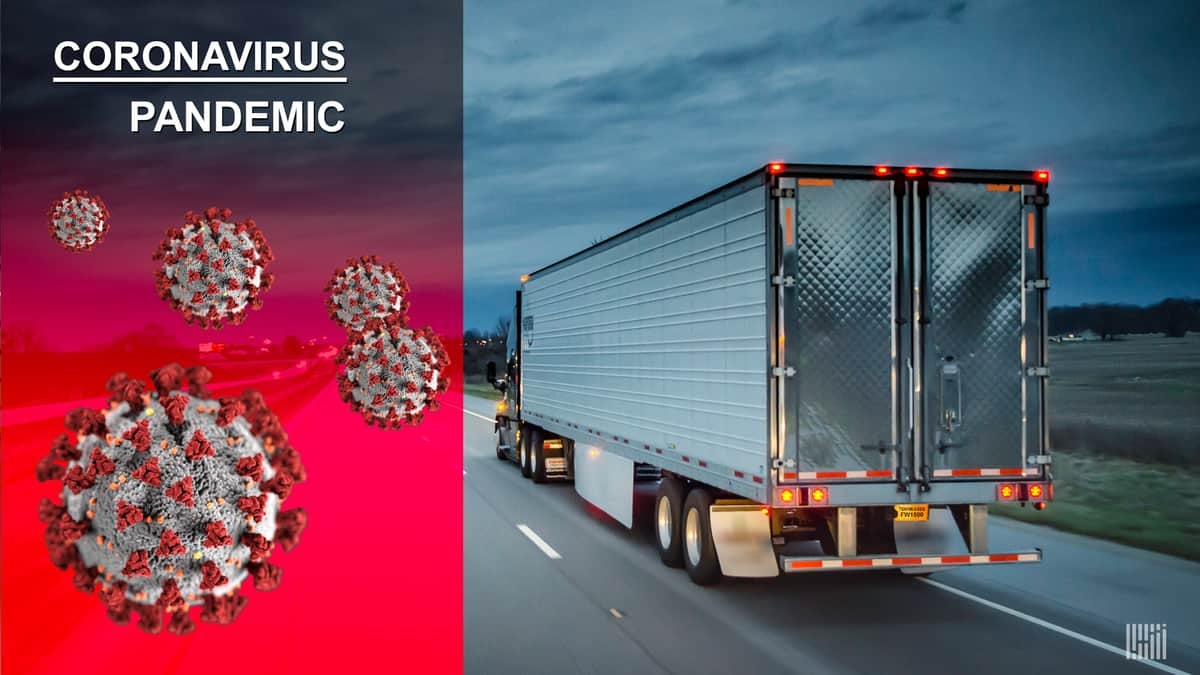
Governments are performing a massive juggling act. One task is to try to “flatten the curve” of new COVID-19 patients so that the healthcare system is not overwhelmed by a spike in demand for limited beds, respirators and intensive care units. The other task is to maintain confidence in the economy in the midst of stock market sell-offs and a spike in unemployment insurance applications. These tasks bring about a trade-off because a great deal of economic activity – especially for small businesses – requires workers to be on-site making hamburgers, building homes, collecting residential garbage, etc. Many universities switched from traditional face-to-face classes to online delivery fairly quickly. In contrast, clerks in a retail store either deal with customers in-person or are laid off. In short, it is very hard to practice economic management and emergency management simultaneously.
Closing the U.S.’s northern and southern borders to non-essential traffic, as announced on March 18 and 20, were examples of artfully managing the trade-off. Tourism will be hurt for the duration but social distancing, now mandated on an international basis, can be enforced while the critical inputs needed to keep tri-national supply chains integrated are still transported. The trucks will keep moving across the Canadian and Mexican borders. This is critical because, by aggregating export and import flows, trucks dominate North America trade in both value and volume.
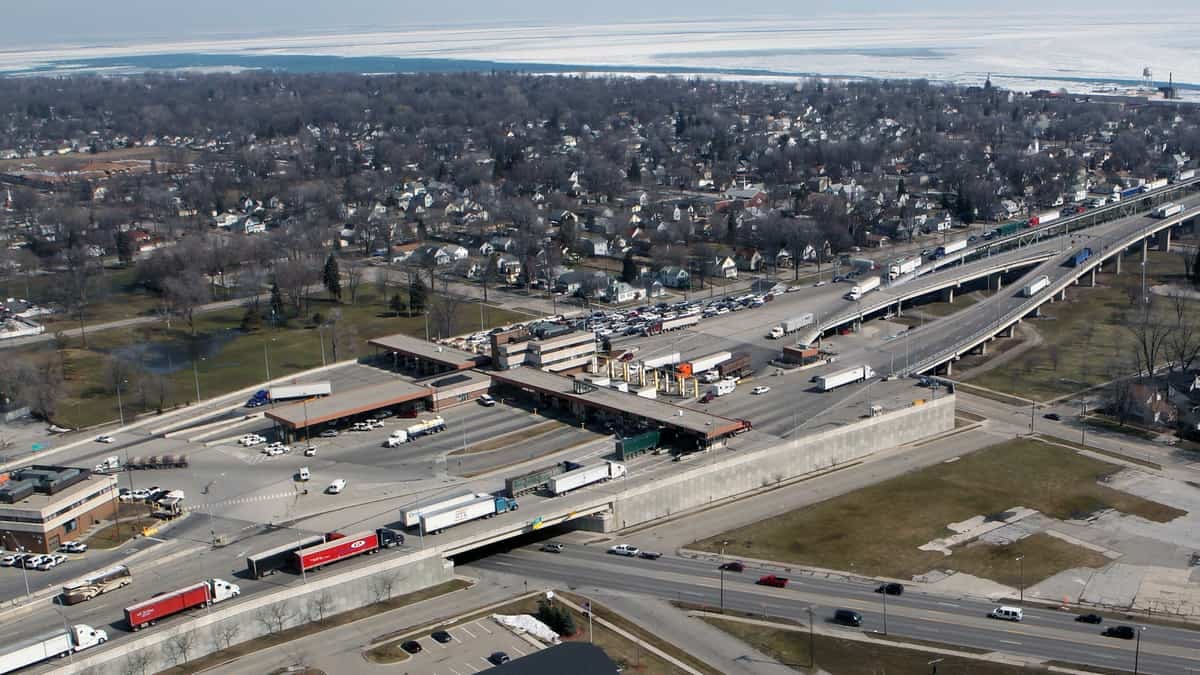
The international land border ruling was made on top of a domestic one whereby the Federal Motor Carrier Safety Administration (FMCSA) issued a nationwide waiver on March 13 to parts of the interstate Hours of Service (HOS) rules. This applied to commercial vehicle drivers transporting goods necessary for COVID-19 emergency relief. Apart from transporting medical supplies, the waiver includes food, fuel, household goods and raw materials such as paper and plastics. Basically, a driver can take as much time as needed to complete an interstate delivery but must take a 10-hour off-duty break. However, after a delivery, the driver has the discretion to empty backhaul to home base before the mandatory 10 hours. An important part of the waiver is that the load must be primarily for emergency relief and not mixed with significant amounts of routine commercial deliverables.
The role of transportation in a normally functioning market economy is fairly clear. It facilitates trade when the buyer and seller of a good are separated by some distance. But if the cost of transportation, when added to the seller’s price of the goods, is too high for the buyer the trade will not take place. In this way transportation hinders trade. In other words, transportation can make or break markets. Some might argue that the same can be said for costs related to manufacturing, marketing and after-sale services. All of these are attributes that add to the quality of the goods. This attracts sellers and buyers and, thus, a market is born.
Most of the time sellers and buyers take markets for granted. They can open and close based on economics. But there is more to well-functioning markets than economics. Markets require a foundation in which transportation plays a critical role. It all comes together like a pyramid. When a societal threat is large enough in magnitude, this pyramid informs the emergency management process. The war on COVID-19 reveals the nature of this pyramid and how fragile markets for goods and services can be.
Supply chains have become more complex and multinational without consumers much noticing. The ability to trade at a distance has fueled globalization with its concomitant drive to open up new markets, increase competition and lower the costs of production. The curse of not noticing this seemingly invisible logistics support structure is that one may not know when supply chain linkages start to strain or fray. The logistics support structure is the foundation of the pyramid:
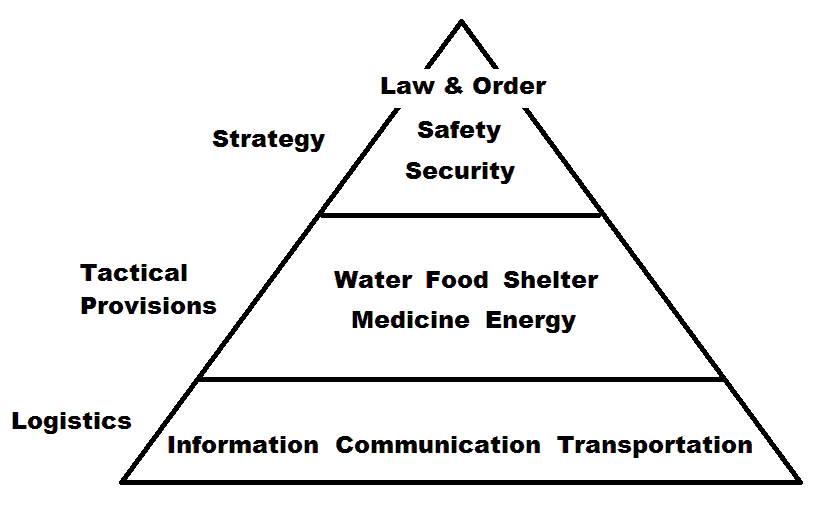
The pyramid shows all components which need to be in place for markets to function efficiently. Since markets promote transactions between people, it is their health, safety and security that is paramount. Working from the top of the pyramid downward, people are willing to trade with each other only if law and order are assured within the vast areas between individual buyers and sellers. Not only does law and order provide the basis for entering into contracts, they provide the basis on which property can be owned and secured.
With law and order in place can firms open for business? Will transactions take place? Not unless the managers and workers feel safe at their places of business. It is also important to note that these people have families and other loved ones. Managers and workers will not come to work unless they feel safe in their homes. They need to know that their elderly relatives are secure in their own homes or care facilities; and their children are able to attend school.
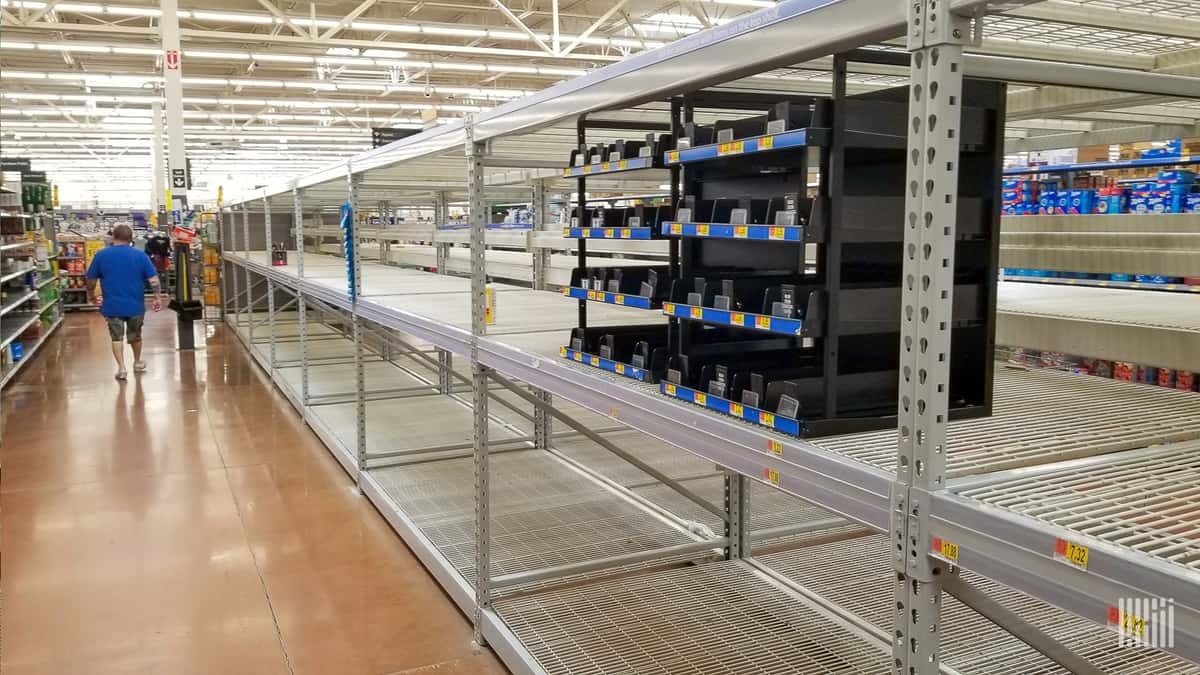
For the strategic elements in the pyramid to function, certain tactical provisions are necessary. If reliable access to water, food, shelter, medicine and energy is not assured, people will not go to work. Reliable access to these necessities of life can make or break civil societies. Since these tactical elements are not located in one place and all of their users are not located in one place either, reliable access is a matter of logistics. This is what the invisible support structure is all about. In this context modern markets are really luxuries supported by reliable information, communication and transportation.
The bottom of the pyramid shows the elements of logistical support. People require access to information in order to mitigate risks or deal with emergencies. They need to communicate with each other in order to share information and make decisions for themselves and for their loved ones. They need access to transportation networks in order to plan for emergencies or to overcome them. Whether it be normal business conditions or actual emergencies, logistics simply cannot be ignored.
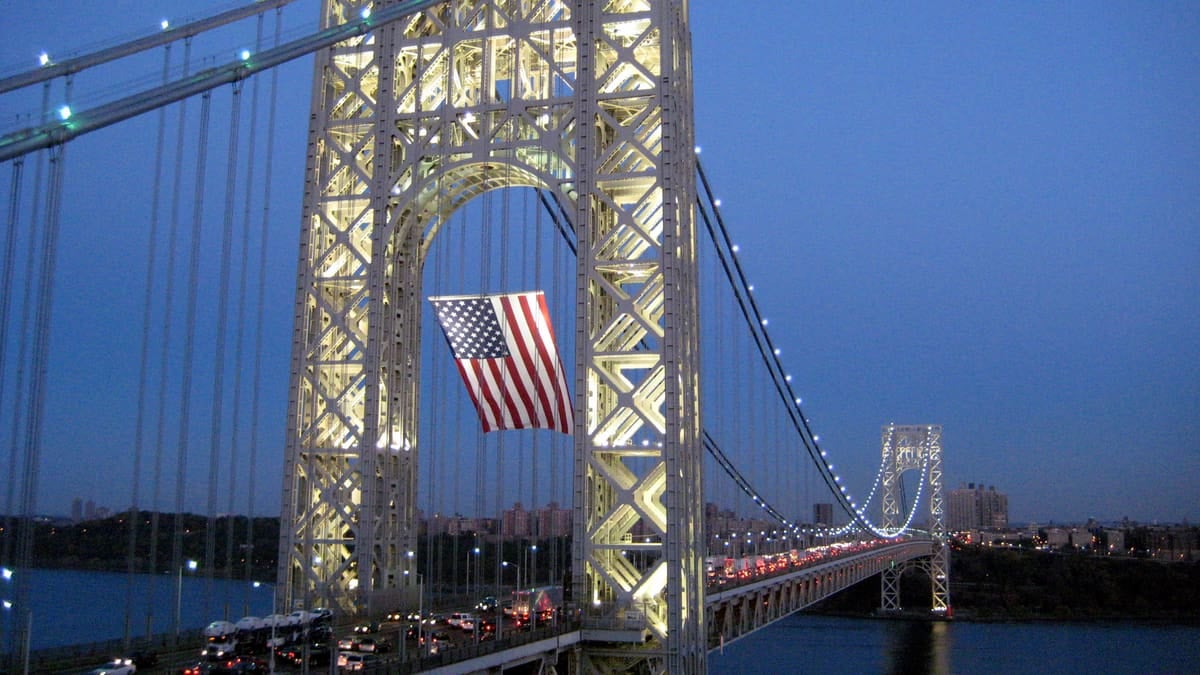
At any time a critical piece of infrastructure can be impacted by traffic congestion or damaged by an accident, environmental disaster or terrorism. If such an event impacts any of the elements shown in the pyramid, supply chain linkages will be strained and markets will slow down or shut down. In this context one can appreciate the role of government in having solid plans in place to provide emergency relief when called upon. In fact, emergency response procedures and the staging of the tactical provisions shown in the pyramid are exercises in supply chain management.
Compared to emergencies like 9/11 and Hurricane Katrina, the U.S. government took the unprecedented step to shut down markets before COVID-19 did it for them. Government officials are working on the assumption that their proactive measures will “flatten the curve” of illness and death and reduce the socio-economic strain. The U.S. economy is now part of a juggling act that is being learned on the fly. One tidbit from the dismal science known as economics is a government can shut down commercial activity more easily than it can revive it. We are all in this together so let us do our part.










